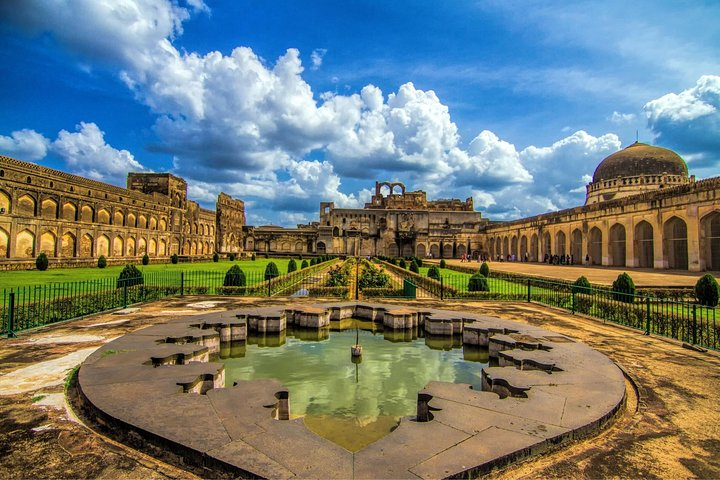Context:
Recently, the Karnataka Board of Waqfs has identified 17 monuments inside the Bidar Fort that belong Waqfs board.
More on the News
- The Karnataka Board of Waqf found that out of 60 properties in the Bidar Fort premises, the Waqf Board found that 17 properties belong to it.
- These properties include the renowned 16-‘Khamba’ (sixteen pillar) mosque, and 14 tombs of various Bahmani rulers.
- The Waqf Board has also claimed ownership over 53 historical monuments in Karnataka.
- The Karnataka government has issued a warning of disciplinary action against officials, who alter land mutation records under the Waqf Act.
About Bidar Fort
- Location: The fort is situated in the old city area of Bidar, Karnataka, positioned on the edge of the Bidar plateau in northern Karnataka.
- UNESCO Recognition: In 2014, the fort complex was placed on UNESCO’s tentative list for World Heritage Site status under the category “Monuments and Forts of the Deccan Sultanate.”
- Cultural Significance: The fort has witnessed numerous historical milestones, including the rise and fall of the Bahmani dynasty and subsequent rule by various dynasties.
Historical Background:
- Original Construction: The fort was initially built by Ahmed Shah Wali Bahmani and later underwent significant reconstruction under Ahmed Shah I’s rule.
- Capital Status: In 1427, Sultan Ahmad Shah I shifted his capital from Gulbarga to Bidar, initiating major architectural developments within the fort.
- Dynasty Changes: The fort passed through multiple ruling dynasties, including the Bahmani Kingdom, Bijapur Sultanate, Mughal Empire, and finally the Asaf Jahi Kingdom of the Nizams.
- Modern Transition: After 1956, when the state of Hyderabad was partitioned, the fort became part of the newly formed Mysore state, now Karnataka.
Architectural Features:
- Structural Layout: The fort follows an irregular rhombus shape, constructed using red laterite stone, with walls measuring 2.5 kilometres on the outside.
- Gateways: The Sharza Darwaza and the Gumbad Darwaza, are the massive complex gates that open to the southern side, enhanced with domes, arches and paintings.
- Defence System: The fort features a unique triple-channelled moat system, with varying widths between 32 to 41 feet and a depth of 30 feet.
- Notable Monuments: The fort complex houses several significant structures, including the Rangin Mahal, Takht Mahal (throne room), Jami Masjid, Diwan-i-Am (Public Audience Hall) and the Sola Khamba Masjid (16-Khamba mosque).
Persian Influence:
- Cultural Impact: The Persian influence is particularly evident in the design of mosques, arches, gardens, and palaces both within and outside the fort.
- Water Management: The fort showcases innovative Persian-inspired water management systems throughout its premises.
- Decorative Elements: The integration of Persian artistic elements is visible in the ornate decorations, particularly in structures such as the Rangin Mahal with its coloured tiles.
Karnataka State Board of Waqfs
It is a statutory body constituted under the Waqf Act 1995.
The Board exercises powers of superintendence and control over all the waqf institutions.
- The waqf institutions include Masjid, Dargahs, Idgahs, Khabrastans (burial grounds), Ashoorkhanas, Orphanages, Makans, etc.
The Board is made up of nominated and elected members from various categories and the Chairman is elected by the members.
Also Read:
‘

